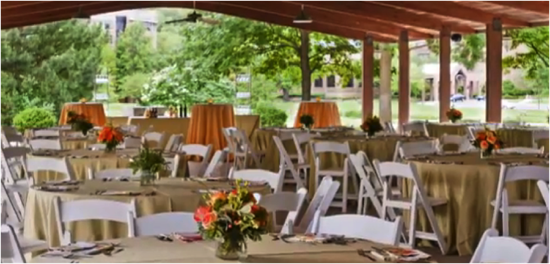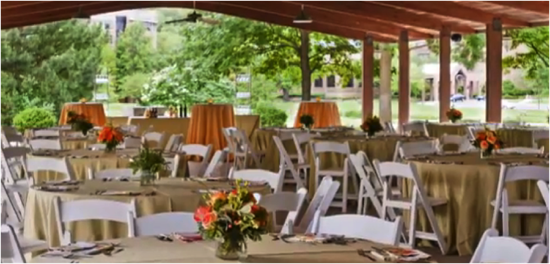Skift Take
What are your objectives for the event?
This is a sponsored post by Q Center, a leading conference center in St. Charles, IL. Q Center helps meeting, training, and business pros deliver outstanding results with the world’s most focused meeting environment. Visit the Q Center blog for news, industry insights, and helpful planning tips. More information about Event Manager Blog’s sponsored posts.
Who doesn’t love a little fresh air? Breathe new energy into your next corporate meeting or event by selecting an outdoor venue. During the spring, summer, and early autumn, you can capture the delightful weather, long days, and relaxing nature of the outdoors by taking your attendees beyond the standard four walls.

Planning Your Outdoor Event
Choosing a site can be the most difficult part of the whole planning process. When planning for an outdoor event for a corporate group, here are things to consider:
• Knowing your agenda helps set the tone for the type of location, décor, and other amenities needed.
• What type of budget are you working within? There are many environments that you can make use of in an outdoor setting, such as pavilions, tents, gazebos, athletic facilities, picnic areas, patios, rooftop decks, and more. What is difference between booking your location and support services separately versus selecting an all-inclusive venue? Explore your options to see if cost efficiencies can be found while still achieving the same result.
• Are restrooms, parking, guest rooms, and other amenities located within a comfortable distance? Pick a suitable location to meet the needs of your guests. If guests must move from one location to another, are there shuttles or other transit options available?
• What is the seasonal weather like in the region? Are you working in a covered space, such as a pavilion, or with an open area such as a tennis court or golf course? Mother Nature can be unpredictable. If you are working with an open area, it may be possible to arrange for a tent or other back-up facilities in case there is inclement weather.
• How will your menu support the theme or objectives of the event? If you’d like people to be able to mingle easily, finger foods may be the best option. Or, if you’d like a more formal vibe, it’s possible to create an elegant dinner setting with three-course meal within a partially enclosed or semi-covered space.
Case Study: Spring Solstice Outdoor Event
In the spring of 2012, Q Center hosted a “Summer Solstice” themed corporate event in its outdoor pavilion for over 500 people. It was an opportunity to chase away the winter blues on a beautiful spring evening.
The tables were dressed in bright spring colors – blues, greens, oranges and yellows. A spring floral bouquet or beautiful pot of vibrant wheat grass was placed on each table.
Daisies were draped from the ceiling of the pavilion and highlighted using accent lighting. The buffets were dressed in fresh sod with the chafing dishes placed on top, so the event took on the look and feel of an outdoor picnic.
The bar served fresh lemonade and signature “Springtini” drinks from under a gazebo. At the end of the evening, the path that walks the guests back to the sleeping rooms was lined with candlelit luminaries.
The event went off flawlessly and created a memorable night for the group. The guests had a wonderful time from the moment they got there until the moment they left.
In Conclusion
One of the biggest benefits of an outdoor space is the energy and freshness it lends your event. Whether you are looking to create a productive networking or team building environment, fashionable dining experience, or energizing meeting space, open-air venues can help take your event outside the box by keeping people active and social.
Be creative in highlighting the character of the outdoor setting and you can create a truly impactful event.
![]()





